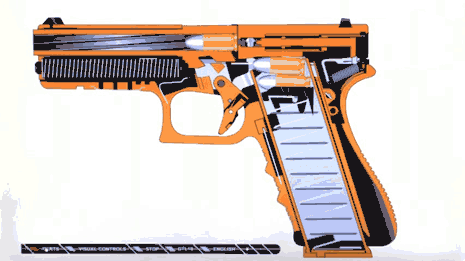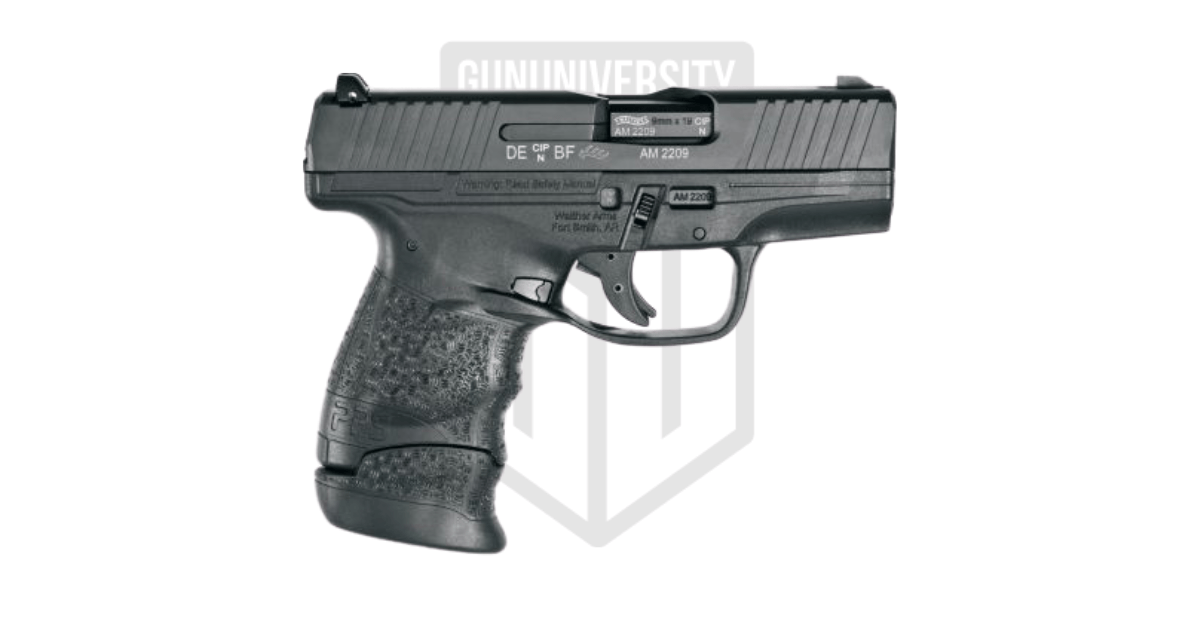Guns for Dummies: Parts of a Gun (Pistol Edition)
So, maybe you’re looking to purchase your first firearm and decide that a pistol is the right choice for you.
But can you name all of the parts? That’s the kind of info you should know.
Everybody knows a little bit about guns. But if you want to be a responsible gun owner you need to know about all of the parts of your gun and what they do.
In this article, you will learn:
- What are the parts of a gun and what do they do
- How these parts work together to create a firing sequence
The Anatomy of a Handgun
The basic premise of guns are simple. Point the muzzle and pull the trigger. But there is a lot of stuff going on that actually makes that firing action happen. There are many static and moving parts that work together in order to launch a projectile. In order to understand that process, you must first understand what each individual component does and where it is physically located on the gun. Let’s get to it!
The Safety
The safety is an interlock that prevents the gun from being discharged inadvertently. There are many types of popular safeties. Each located on a different part of the gun. Thumb, trigger, and grip safeties are all common varieties, but there are many more. However your safety is placed, they all perform the same function.
But how can you tell if your safety is on or off?
When a safety is in the on position, your firearm will not fire.
But when a safety is in the off position, the gun will fire when the trigger is pulled.
You can normally tell the safety’s condition by its appearance. Most of the time there is a red indicator that lets you know otherwise. There’s an old saying, “If you see red, you’re dead.” This is referring to your gun’s safety being off and able to shoot.
Some safety indicators are much easier to read than others, so be sure to read and understand your pistol’s users manual for proper verification.
The Magazine Well
This is where you insert you magazines. Magazines are ammunition storage and feeding devices for your firearm. These are often spring loaded which allow for the next round to be pushed into the firing position after the previous round has been fired. You will often hear these referred to as “clips” in pop culture, but this is technically incorrect.
When inserting a magazine into the well, be sure to do so firmly to properly seat the magazine. Also, take care of your magazines. These areas are some of the most frequent causes of pistol malfunction. Keep them clean and free of gunk, and they’ll be good to you.
The Magazine Release
The Magazine releases is a button normally found near the top of the magazine well on the frame. By depressing this button, you are able to easily release and remove a magazine inserted into the pistol. Sometimes this device is a paddle on the base of the trigger guard or even a button at the rear of the magazine well.
The Hand Grip
The hand grip is the part of the gun you hold while shooting the firearm. Remember to take grip size into consideration when choosing a gun to ensure you can handle it safely.
The Hammer
The hammer is the part of the handgun that is used to strike either the primer (rare) or the firing pin which then strikes the primer. Not all pistols have hammers, in fact, most modern pistols are striker-fired.
The Striker
The striker is an internal device that acts much like a firing pin. However, the striker is pulled and released under spring tension to fire the round whereas a firing pin is struck by a hammer. To visualize how a striker works, imagine a pinball machine ball launcher.
The Slide
The slide houses the entire upper portion of your pistol. In order to load the pistol, the slide must be released from its rearmost position to feed a round from the magazine into the chamber. For subsequent shots, the slide automatically recoils in order to help load the next cartridge into the firing chamber.
The Firing Chamber
The firing chamber holds the next round to be discharged. This is where the firing pin or striker makes contact with the primer to propel the bullet.
The Ejection Port
Cut into the top of the slide, the ejection port allows for a place for spent cartridge casing to leave the pistol. When not actively ejecting a casing, use the port to manually inspect the firing chamber or clear a misfired round.
The Slide Lock (Slide Release)
When using the ejection port to clear a misfire or while unloading a firearm, you can use the slide lock to keep the slide in its rearward position. The slide lock will also automatically engage on many pistols after firing the final round in your magazine notifying the shooter of the need to reload.
The Front and Rear Sights
Zero in on your target with front and rear sights. These must be adjusted so that the bullet impacts wherever they are aiming.
The Tang
The tang resembles a small hook on the back of the grip. It prevents the webbing between your thumb and forefinger safe from the slide’s action as it moves along the barrel.
The Barrel and Muzzle
This barrel is the length of tubing the bullet travels down as it leaves the gun. The muzzle is the last point part of your firearm that the bullet touches. When found on muzzles, threads allow for a suppressor or silencer attachment.
The Trigger and Trigger Guard
The trigger releases the hammer to actuate the firing sequence of the firearm. Modern weapons now utilize a double action trigger. This means that the trigger cocks back the hammer and releases it in one motion. The trigger guard is the frame around the trigger. This help to prevent any inadvertent firing of the weapon.
The Firing Sequence of a Pistol
Now that we’ve covered the basic parts of a gun, let’s take a look at how they all work together.

(They say a picture’s worth a thousand words… Here’s a GIF.)
When you pull the trigger, the hammer releases. The hammer moves to its forward position and strikes the primer cap of the cartridge. This primer combusts sending hot, rapidly expanding gas through the round’s flash holes and into the casing. This then ignites the propellant housed within the case. As the propellant burns, the temperature inside the casing increases to a temp of roughly 5,600 degrees. Following pressure-temperature rules (Remember your physics classes?), the pressure within the round raises up to 62000 PSI (Pounds per Square Inch) creating a seal which prevents anything from escaping from the back end of the case. That would be very bad for the shooter. Simultaneously, the bullet overcomes its breaking point on the seal it has which the case. The separates the bullet and hurtles it forward down the bore. While traveling through the barrel, it passes through the pistol’s rifling (this adds stability for the bullet as it continues it path). About one -third of the way down the barrel, the bullet breaks the sound barrier and releases a sonic boom. This is the actual gunshot noise you hear. The bullet later exits the muzzle and finds its way to your carefully chosen target.
Parts of Gun Explained
Now, not all guns have these exact same parts. Some have more. Others less. But by learning these basic pieces and what they do, you will have a deeper understanding for all pistols you will encounter. It’s also pivotal that you understand how the firing sequence works. This should allow you to show the proper respect to a firearm when handling it.
Recent Posts
December 20, 2025
December 15, 2025
December 15, 2025
December 12, 2025





It’s nice that you pointed out how you need to know about all of the parts of your gun and what they do if you want to be a responsible gun owner. I’ve owned my gun for about a year now and I think I need to learn more about how it works. Also, I heard you could do gun DIY upgrades now, which sounds interesting.